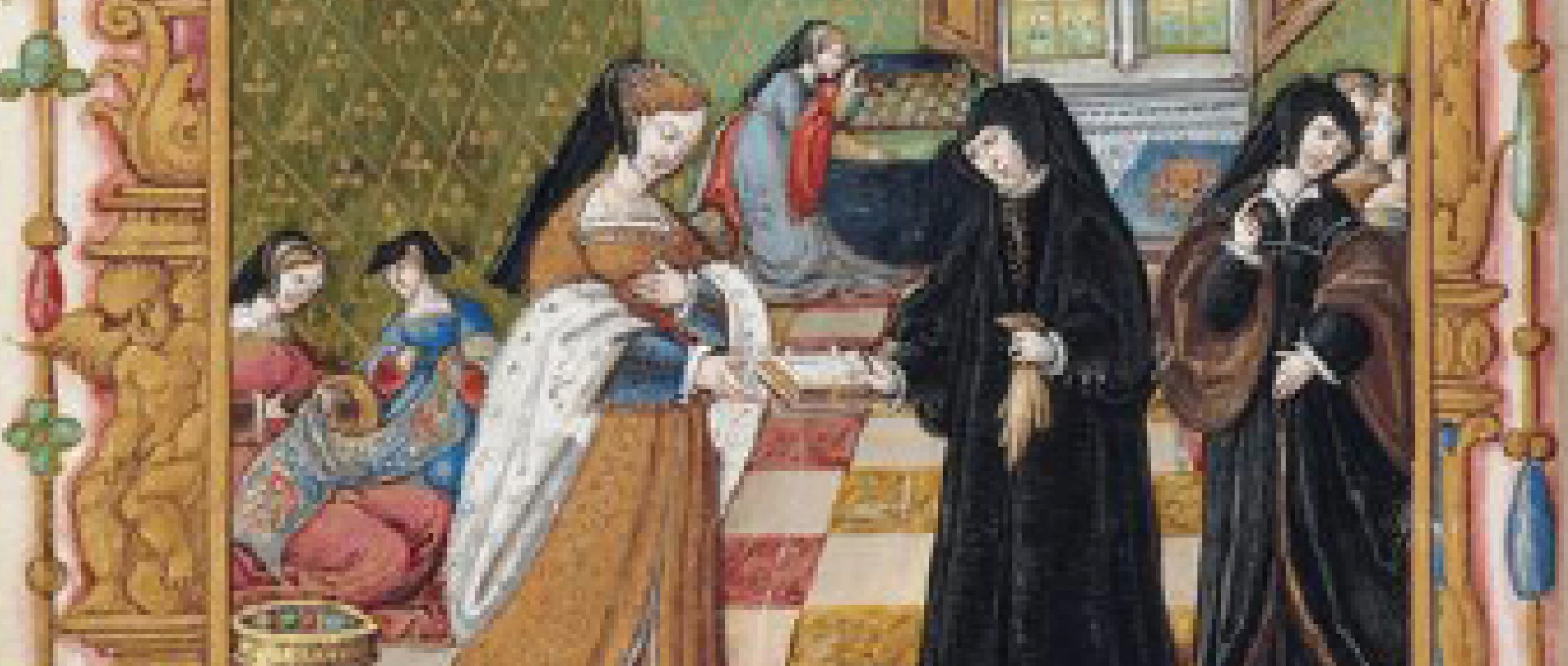Lectures obligatoires :
Une sélection de textes en prose (Marie de Gournay, Marguerite de Navarre, Michel de Montaigne et Etienne de la Boétie, François Rabelais…) et en poésie (Philippe Desportes, les Dames des Roches, Joachim Du Bellay, Pernette du Guillet, Nicole Estienne, Louise Labé, Clément Marot, Estienne Pasquier, Pierre de Ronsard, Maurice Scève…), ainsi que quelques emblèmes (de Gilles Corrozet et Guillaume La Perrière).
Un choix de textes primaires et d’ouvrages critiques sera disponible via Canvas.
Quelques pistes bibliographiques :
Berriot-Salvadore, Evelyne. Les Femmes dans la société française de la Renaissance. Genève: Droz, 1990.
---. Un corps, un destin. La Femme dans la médecine de la Renaissance. Paris: Champion, 1993.
Clément, Michèle et Janine Incardona, eds. L’Émergence littéraire des femmes à Lyon à la Renaissance, 1520-1560. Saint-Étienne: PU Sainte-Étienne, 2008.
Closson, Mariane, ed. L’Hermaphrodite de la Renaissance aux Lumières. Paris: Garnier, 2013.
Cottrell, Robert D. Sexuality/Textuality: A Study of the Fabric of Montaigne’s Essais: Columbus: Ohio State UP, 1981.
Ferguson, Gary, ed. L’Homme en tous genres: Masculinités, textes et contextes. Paris L’Harmattan, 2009.
---. Queer (Re)Readings in the French Renaissance. Homosexuality, Gender, Culture. Aldershot: Ashgate, 2008.
Frelick, Nancy M., and Edith Benkov, eds. Subject/Object and Beyond: Women in Early Modern France. Toronto: Iter Press, 2024.
Gray, Floyd. Gender, Rhetoric, and Print Culture in French Renaissance Writing. Cambridge: Cambridge UP, 2000.
Hampton, Timothy. Literature and Nation in the Sixteenth Century: Inventing Renaissance France. Ithaca: Cornell UP, 2001.
Jordan, Constance. Renaissance Feminism: Literary Texts and Political Models. Ithaca: Cornell UP, 1990.
Keller, Marcus. Figurations of France: Literary Nation-Building in Times of Crisis (1550-1650). Newark: U of Delaware P, 2011.
Kritzman, Lawrence D. The Rhetoric of Sexuality and the Literature of the French Renaissance. Cambridge: Cambridge UP, 1991.
LaGuardia, David. Intertextual Masculinity in French Renaissance Literature: Rabelais, Brantôme and the Cent nouvelles nouvelles. Aldershot: Ashgate 2008.
Laqueur, Thomas. Making Sex: Body and Gender from the Greeks to Freud. Cambridge: Harvard UP, 1992.
Larsen, Anne R. et Colette H. Winn, eds. Renaissance Women Writers: French Texts/American Contexts. Detroit: Wayne State UP, 1994.
Long, Kathleen P. Hermaphrodites in Renaissance Europe. Aldershot: Ashgate, 2006.
---, ed. High Anxiety : Masculinity in Crisis in Early Modern France. Kirksville: Truman State UP, 2002.
Poirier, Guy. L'Homosexualité dans l'imaginaire de la Renaissance. Paris: Champion, 1996.
Reeser, Todd W. Moderating Masculinity in Early Modern Culture. Chapel Hill: North Carolina Studies in the Romance Languages and Literatures, 2006.
---. Setting Plato Straight: Translating Ancient Sexuality in the Renaissance. Chicago: U of Chicago P, 2016.
Rothstein, Marian. The Androgyne in Early Modern France: Contextualizing the Power of Gender. New York: Palgrave Macmillan, 2015.
Siefert, Lewis C. and Rebecca M. Wilkin, eds. Men and Women Making Friends in Early Modern France. Farnham: Ashgate, 2015.
Warner, Lyndan. The Ideas of Man and Woman in Renaissance France. Farnham: Ashgate, 2011.
Wiesner, Merry E. Women and Gender in Early Modern Europe. 2nd ed. Cambridge: Cambridge UP, 2000.
Winn, Colette, H. Teaching French Women Writers of the Renaissance and Reformation. New York: MLA, 2011.
Yandell, Cathy M. Carpe Corpus: Time and Gender in Early Modern France. Newark: U of Delaware P, 2000


